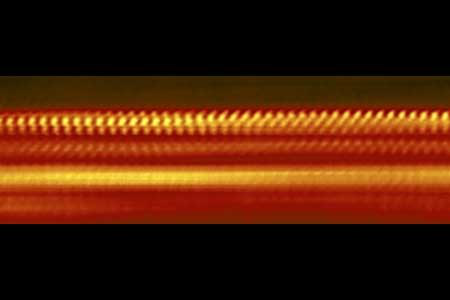Scientists have developed a material that is 10 atoms thick, 50,000 times thinner than the insulation for a mobile phone
Researchers at Stanford University have developed a material just 10 atoms thin that provides the same insulation as a glass plate 100 times thicker. That's 50,000 times thinner than the insulation currently available for cellphones and laptops. Thinner insulation will allow engineers to build even thinner electronic devices.
Scientists have developed insulation 10 atoms thick, which is 50,000 times thinner than the insulation for a mobile phone
The heat we feel from our smartphones or laptops is actually an "inaudible" high-frequency sound: When an electric current flows through a wire, electrons strike atoms in the material, causing the atoms to vibrate, producing high-frequency sound waves inaudible to the human ear to direct the heat flow.
Thinking about heat as a form of sound inspired researchers at Stanford University to borrow principles from the physical world. Music studios are quiet thanks to thick glass Windows that block outside sound. Similar principles apply to heat shields in today's electronics. The researchers took their inspiration from multiple glazing -- layers of glass of different thicknesses separated by layers of air, which can make the interior warmer and quieter. Instead of glass, they used an atom-thick material that provided considerable insulation.
To make nanoscale heat shields practical, researchers will have to find some mass-production techniques to spray or deposit atomic thin layers of material onto electronic components during the manufacturing process.

